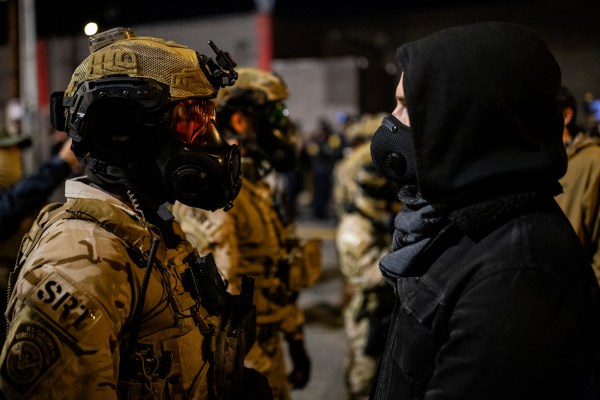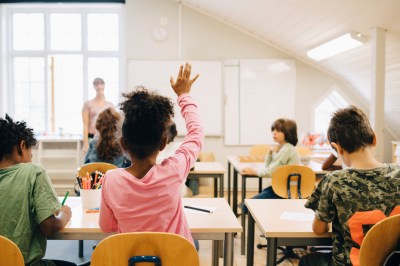Cara Fitzpatrick’s new book, The Death of Public School: How Conservatives Won the War Over Education in America, is challenging to summarize. It’s really two books, or at least two projects, in one. One book presents an interesting, deeply researched history of the school choice movement. It focuses closely on key moments from the late 1980s to early 2000s that led to the inauguration of both school vouchers and charter schools, the court cases that ultimately affirmed their constitutionality, and their early years of growth.
But that careful, diligent research is awkwardly forced into a second book, a larger critique of the school choice movement and how it’s harmed American education in general—a critique that doesn't fit the facts.
Fitzpatrick’s story relies on a link between three early voucher advocates: Milton Friedman, Virgil Blum, and James Kilpatrick. Friedman, the Nobel Prize-winning economist, supported school vouchers due to his belief in the power of the free market to improve the provision of services. Blum, a Jesuit priest, believed they advanced religious freedom and pluralism in education. And Kilpatrick, a newspaper columnist and staunch segregationist, supported vouchers after his other plans to educate white children separately from black children were thwarted by the courts, the federal government, or the electorates of Southern states.
Fitzpatrick’s own evidence shows that Southern segregationists did not want school choice in any meaningful sense of the term. Rather, they wanted to enforce the South’s crumbling racial apartheid. Put another way, they did not want to allow white and black kids the choice of integrated schools.
Moreover, her comparison of the three men ignores important historical details. Yes, Southern segregationists opened private schools and sought to fund them through a mix of public and private funds, depending on the place and time. Blum’s school choice advocacy group, however, actually submitted an amicus brief opposing a Virginia voucher plan that Kilpatrick supported. Friedman explicitly wrote that he believed that school choice would lead to more integration, which he viewed as progress.
To compare the careful reasoning of Milton Friedman and Virgil Bloom with Kilpatrick’s arguments of convenience is like equating the works of Picasso, Pollock, and Ruby the Painting Elephant: The outcomes might look similar to some, but the process of getting there is undoubtedly different.
Perhaps the most glaring issue is that you’d expect public schools to die in a book titled The Death of Public School. But, of course, they don’t.
The Death of Public School ends in Milwaukee, which Fitzpatrick calls a “microcosm of America’s debate over school choice” and where she claims the policy has “transformed the education landscape.” However, only 26 percent of Milwaukee students used school vouchers to attend private school in 2022, and 8 percent attended independently authorized public charter schools the same year, according to the Milwaukee Journal Sentinel. After 30 years, just a hair over one-third of students use public funding to attend schools outside the control of the public system. Is that what death looks like?
Perhaps the “death” of public schools comes with Fitzpatrick’s closing line, which describes an educational system, guided by school choice, that is not “a system of common schools for everyone, but in everyone making a la carte educational choices for themselves.” But the preceding 299 pages of the book, where she often carefully describes the history of the American public school system, describes a system that has not been for everyone; in it, some privileged people get to make a la carte educational choices for themselves, while everyone else is stuck with whatever is left over based on their zip code. If public schooling is dead, it either died a long time ago or was never alive at all.
Relatedly, you’d expect a definitive conservative victory in a book with the subtitle How Conservatives Won the War over Education in America. But at no point do conservatives “win” the war over education in America.
The book’s final chapter takes place in Milwaukee because former Secretary of Education Betsy DeVos traveled there to give a speech lauding school choice. This makes poor evidence for the proposition that conservatives have “won” the war over education; she is, of course, no longer leading the Department of Education. Not only that, she was replaced by about as traditional of an educator as possible: Miguel Cardona was a public school teacher, principal, and assistant superintendent before being named commissioner of that bright red state, Connecticut.
The power of teacher’s unions also belies Fitzpatrick’s claim about the victor of the so-called education wars. The nation’s two largest teachers unions are still massively powerful. American Federation of Teachers President Randi Weingarten has been a longtime ally of President Joe Biden, and both she and National Education Association President Becky Pringle were invited to the White House the day after he was inaugurated. Emails released through the Freedom of Information Act showed that both unions had a direct line of communication to the head of the CDC during the COVID-19 pandemic, exerting outsize influence on school reopening policies.
And colleges of education, which train the lion’s share of teachers and administrators, lean incredibly far to the left. The American Educational Research Association, the largest organization of education professors in the nation, submitted an amicus brief to the Supreme Court defending affirmative action, voted to boycott any state with “anti-trans” laws (what exactly constitutes an “anti-trans” law remained undefined), and even went so far as to issue a statement in support of the #ShutDownSTEM/#ShutDownAcademia anti-racism slacktavist hashtag protest in the summer of 2020.
Even if we set aside the question of who is “winning” and who is “losing,” these martial metaphors make for misplaced and unnecessary catastrophizing.
Fitzpatrick writes that “the war over school choice has been the fiercest of this country’s education battles.” But her hyperbole ignores history. More than 20 people died during riots in Philadelphia in 1844 over what Bible was to be read in public schools. School integration and Massive Resistance required the national guard to integrate Little Rock Central. Arguments over school choice have certainly been fierce, but as far as I know no one has been stabbed by the American flag during one. Characterizing school choice as the fiercest war undermines Fitzpatrick’s diligent and careful archival research.
Even if public schools were dead or dying (and we can debate whether or not it is due to self-inflicted wounds another day), it’s worth engaging with the kinds of schools that are emerging in their place. Recent stories in the Washington Post and Christian Science Monitor paint a hopeful picture of smaller, tightknit educational communities meeting the diverse needs of children and their families. Schools are experimenting with new schedules and calendars, different pedagogical methods and technological tools, and a host of elements to put the needs of children before the needs of some abstract “system” that has never really lived up to its most vocal cheerleaders’ promises. Things are more chaotic, many of these schools are in their early days, and some may be more successful than others. But, my goodness, they are vibrant places, full of life.






Please note that we at The Dispatch hold ourselves, our work, and our commenters to a higher standard than other places on the internet. We welcome comments that foster genuine debate or discussion—including comments critical of us or our work—but responses that include ad hominem attacks on fellow Dispatch members or are intended to stoke fear and anger may be moderated.
With your membership, you only have the ability to comment on The Morning Dispatch articles. Consider upgrading to join the conversation everywhere.